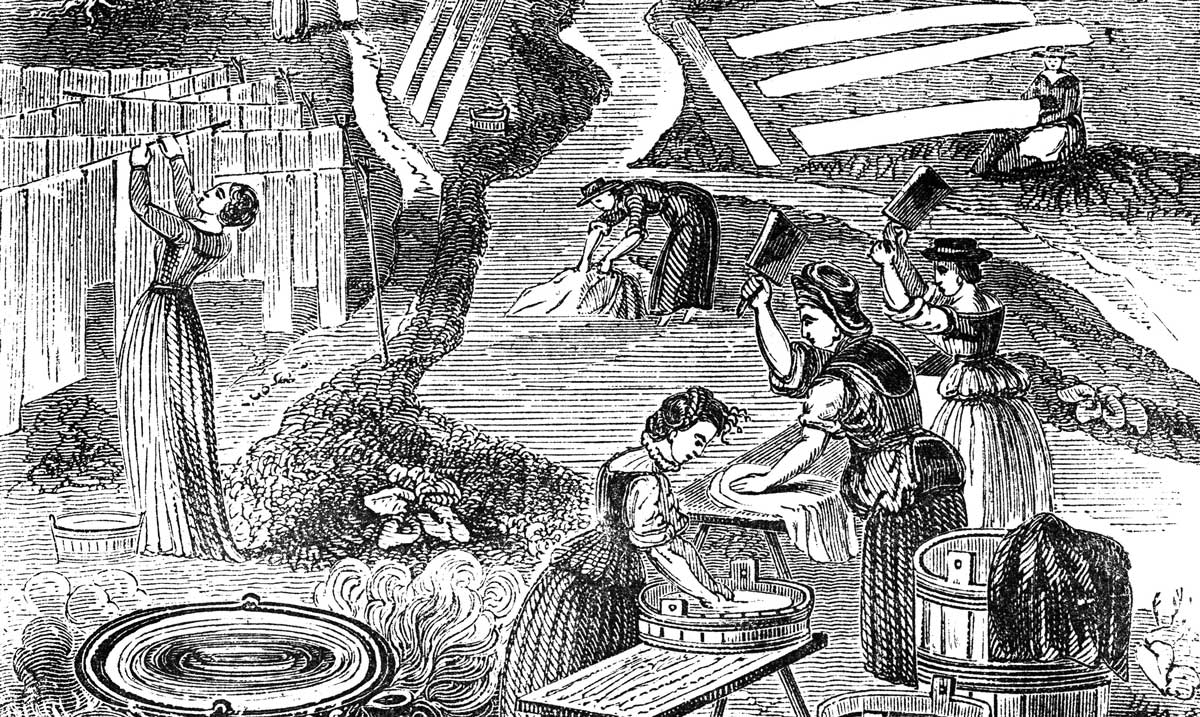Crimes of Fashion | History Today - 5 minutes read

Could something as mundane as a shirt ever be the motive for murder? What if clothing were more expensive than rent or a mortgage? In 1636 a maidservant, Joan Burs, went out to buy mercury. A toxic heavy metal, mercury causes damage to the nervous system and can feel like insects are crawling beneath the skin. Burs baked the poison into a milk posset (which often contained spices and alcohol that might have masked the bitter taste), planning to kill her mistress. She believed that if the lady of the house were dead, she herself might get better clothing.
The simplest kind of coat cost £1, which was 20 days’ labour for a skilled tradesman. Clothes were sometimes mentioned first in a will, since they could be more expensive than a house. Even the well-off, such as Samuel Pepys, remade and refashioned existing garments as much as they could rather than buying new.
It is no wonder, therefore, that there was a thriving black market for second-hand clothing of dubious provenance; much of the clothing worn by the middling and working classes essentially ‘fell off a cart’. The web of how such things were acquired could become extremely complex, as tinkers hawked both new and second-hand wares, and items were passed on or exchanged – not to mention the markets that thrived on the clothing trade. To supply the country’s insatiable demand for new clothes, thieves might strip drunk people on their way home from a night out, force doors, or even tear down walls. In urban areas in 17th-century England stolen clothes accounted for the most prosecutions of any crime. It was rare for anyone to commit (or attempt to commit) murder over an item of clothing, but the motivations for stealing were broad. Often, they were crimes of opportunity: freshly washed linen hung out to dry on hedges, awaiting capture from any passer-by.
Some thefts, however, were more complicated, involving acting and the tricks of the con-artist’s trade. One cold winter’s night (since it was the little ice age, every winter’s night was cold), a teenage boy was sent on a simple errand. All he had to do was take some clothes – valued at about £4, no small sum – and deliver them to a gentleman across the city. Passing along Watling Street, a woman stopped him and demanded his name, his mother’s name, where he lived and what his errand was. He answered her questions and continued along his journey. Meanwhile, the woman passed all this information on to her partner-in-crime, who set off after the boy, hailing him by name and speaking of his mother. She asked him to buy a shoulder of mutton for her while she waited with the clothes. The boy did so, but returned to find no woman and no clothes. Such operations would have been immensely profitable and difficult to trace, as the stolen goods would have been sold on to the second-hand clothes dealers who supplied the whole country.
No member of society was safe from the theft of clothes. Perhaps the best-loved, and certainly one of the best-known, celebrities of the Elizabethan period (as well as being Elizabeth I’s personal jester) was the clown Richard Tarlton, known for his witty comebacks and cheeky persona. One night, while Tarlton was downstairs at an inn, wearing only his shirt and nightgown, drinking with some musician friends, a thief crept into his room and stole all his clothes. The story travelled around London to great hilarity and the clown was publicly mocked when he next performed onstage. However, Tarlton had the somewhat macabre last laugh, responding to the crowd with one of the impromptu verses that made him famous. He declared,
When that the theefe shall Pine and lacke,
Then shall I have cloathes to my backe:
And I, together with my fellowes,
May see them ride to Tiborne Gallowes.
Those caught stealing clothes were frequently hanged at Tyburn, known as ‘Tyburn tree’. (Executions were supposed to deter thieving.) Spending their last night at Newgate prison, they would be paraded through the streets in a horse and cart before a boisterous crowd, all jostling for the best view of the condemned and hanging on the thief’s last words. Ironically, the events were prime sites for pickpockets.
While clothing could be the motive for theft or murder because it was so difficult to come by, an accurate description by a witness of the perpetrator’s clothing could secure a conviction. For example, after Francis Terry stole wheat from a barn in 1626 he left a distinctive footprint that made identifying him easy. The print showed three indentations mapped to three nails on the sole of Terry’s right boot.
After other crimes, witnesses recalled a man in a red coat, wearing a hat with a hole in it, or dressed in grey clothes. Since many people only had one or two outfits, this was seen as positive proof and helped secure a conviction. Finally, in close communities where word of mouth was paramount, any change in clothing could arouse suspicion. Mary Watts gave the game away after allegedly stealing a silver bowl and some clothing, since she bought herself new clothes with the profits, to the shock of the community around her.
People in the 16th and 17th centuries had a relationship with clothing that is difficult to comprehend in an age of fast fashion, where clothes change with the seasons and any change in identity is instantly worn on the body. But, for early modern people, fashion was just as connected to identity. Most could not afford to change their clothes often, but their outfits became part of how they were seen and how they saw themselves. A change of clothing could provoke anger, hilarity, or even thoughts of murder.
Sophie Shorland is a historian of queenship and celebrity.
Source: History Today Feed